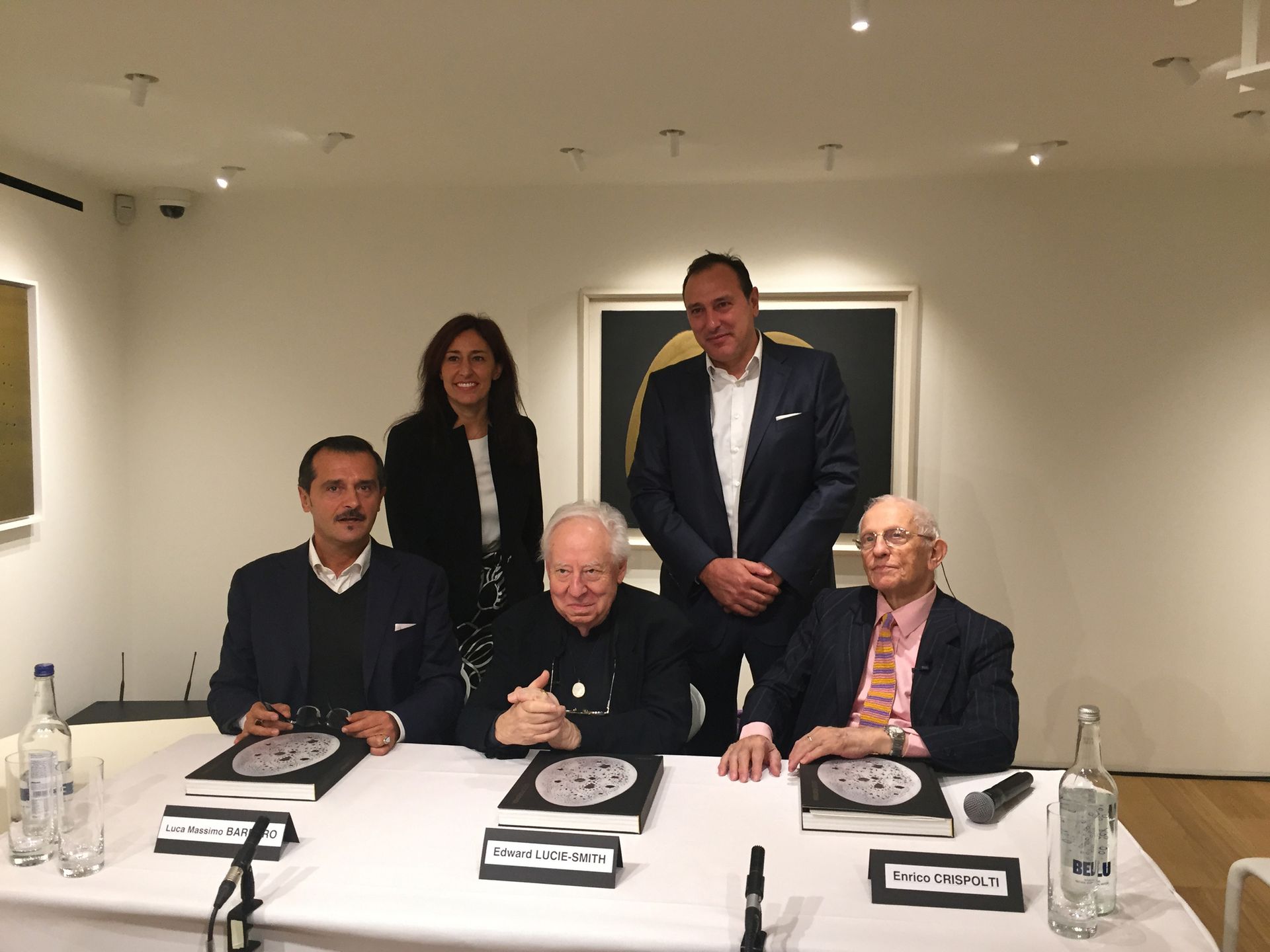Three leading scholars chaired a discussion on Lucio Fontana’s early influences and his significance in art history at the opening of an exhibition dedicated to the Italian modern artist at the London gallery Tornabuoni Art this week. “We felt it was important to give the show an academic backbone,” says the gallery’s director Ursula Casamonti.
The Italian art historian, Enrico Crispolti, the author of Fontana’s three catalogue raisonnés and personal friend of the artist, started by pointing out he began his career as a sculptor in the 1920s—a fact that places his subsequent and well-known canvases in a different light. “His slashes were a truly revolutionary act if you think that all the other avant-garde artists, especially Mondrian and Malevich, were intent on conquering the surface,” Crispolti sad. “The space behind the canvas was unheard of.”

The British writer and historian Edward Lucie-Smith was keen to remind visitors of Fontana’s often overlooked Argentinian heritage and the profound impact it had on his radical artistic gestures. “There was a degree of libertarianism in Argentine art, which was less burdened by tradition, that must be taken into account when we consider Fontana’s work,” he said. “He is a much more radical pioneer than he is often though to be.” He added that by the time the first Arte Povera show, curated by Germano Celant, took place in Genoa in 1967, Fontana was already reaching the end of a long career.
Closing the discussion was Luca Massimo Barbero, the author of the catalogue raisonné of Fontana’s works on paper, director of the institute of art history at the Fondazione Cini, Venice, and associate curator of the Peggy Guggenheim Museum, Venice. “After the drama of the Second World War, Fontana brought a futuristic impulse that contributed to the 1950s being an extraordinary decade of rebirth in Italy,” he said.
He also addressed the evident aesthetic and market appeal that his work seems to possess. “[His work] is elegant, which is not a popular term these days, and is often confused with the word ‘glamorous’, which is not elegant at all,” he said. “The market can be so blind sometimes—he has some wonderful ceramics and works from other periods that are almost totally ignored.”

